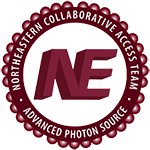Structure of the ATP-binding domain of Plasmodium falciparum Hsp90.
Publication Type:
Journal ArticleSource:
Proteins, Volume 78, Issue 13, p.2738-44 (2010)Keywords:
Adenosine Diphosphate, Adenosine Triphosphate, Animals, Antibiotics, Antineoplastic, Benzoquinones, Binding Sites, HSP90 Heat-Shock Proteins, Hydrogen Bonding, Lactams, Macrocyclic, Models, Molecular, Plasmodium falciparum, Protein Structure, Secondary, Protein Structure, Tertiary, Protozoan ProteinsAbstract:
<p>Hsp90 is an important cellular chaperone and attractive target for therapeutics against both cancer and infectious organisms. The Hsp90 protein from the parasite Plasmodium falciparum, the causative agent of malaria, is critical for this organism's survival; the anti-Hsp90 drug geldanamycin is toxic to P. falciparum growth. We have solved the structure of the N-terminal ATP-binding domain of P. falciparum Hsp90, which contains a principal drug-binding pocket, in both apo and ADP-bound states at 2.3 A resolution. The structure shows that P. falciparum Hsp90 is highly similar to human Hsp90, and likely binds agents such as geldanamycin in an identical manner. Our results should aid in the structural understanding of Hsp90-drug interactions in P. falciparum, and provide a scaffold for future drug-discovery efforts.</p>
